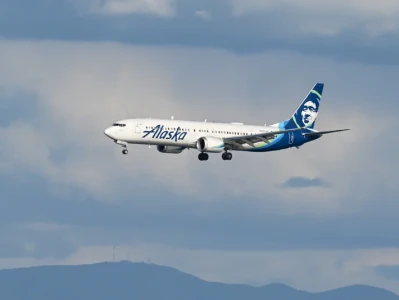An emergency squawk—the silent, digital scream of an aircraft in distress—is one of the most jarring signals in our modern world. It’s a stark, four-digit code, 7700, that cuts through the noise of global air traffic control. And on two consecutive days last week, that signal emanated from two different Air France flights departing Paris.
First, a Boeing 777 freighter bound for Chicago. Then, less than 24 hours later, another 777, this one a 16-year-old passenger jet carrying hundreds of people toward the tropical paradise of Reunion Island, turned back over the Swiss Alps, its journey aborted (Air France flight AF652 returned to Paris after pilots declared an emergency - airlive). Both planes landed safely back at Charles de Gaulle. No one was hurt. The news cycle moved on.
But I can’t stop thinking about it. When I saw two ‘7700’ squawks from the same airline at the same hub in such a short span, my engineer brain immediately went past the headlines. Forget the momentary drama. This isn't a story about two isolated technical glitches. This is a story about the ghost in the machine—the immense, invisible, and deeply complex operating system that is a legacy airline in the 21st century. And these incidents? They are the system sending us a message.
The Body and The Fever
Think of a massive airline group like Air France-KLM not as a company, but as a living organism. It has a brain—the C-suite in Paris. It has a circulatory system—the global flight routes connecting continents. And it has a body—the thousands of pilots, engineers, and flight attendants, and of course, the fleet of hundreds of aircraft. A 16-year-old Boeing 777, like the one on flight AF652, isn't old by aviation standards, but it's an asset that has been working hard for a long, long time. It has logged millions of miles, weathered countless storms, and undergone thousands of maintenance cycles.
When an aircraft like that declares an emergency, it's like the body spiking a fever. It’s a symptom. The immediate cause might be a faulty sensor or a hydraulic pump, but the real question is, what does it tell us about the health of the entire organism? Was this just the brutal, statistical reality of operating a massive fleet, where random failures are an inevitability? Or is it a sign of something deeper—a system under immense pressure to modernize, expand, and cut costs, all at the same time?
An airline is the ultimate high-wire act. It’s a delicate dance between aging metal, cutting-edge software, human expertise, and brutal economic realities. It’s a system designed for 99.999% reliability, where even the smallest deviation can have massive consequences. We demand rock-bottom fares to fly across the planet, but we also, quite rightly, demand absolute perfection. How does any organization, let alone one with a 90-year history, reconcile those two contradictory forces? What does it take to keep the organism healthy?

The Architect in the Control Tower
To understand the organism, you have to look at the architect. Since 2018, that has been Benjamin Smith, the first non-French CEO in the history of Air France-KLM. His job is one of the most complex in the world. He’s not just running an airline; he’s performing open-heart surgery on a conscious patient. He’s tasked with modernizing a fleet, integrating partners like Delta and China Eastern, repaying massive government loans from the pandemic, and pushing the entire €30 billion enterprise toward a profitable, sustainable future—all while thousands of `Air France flights` are in the air at any given moment.
This is the kind of challenge that gets my blood pumping. Smith is essentially trying to upgrade a city’s entire electrical grid and plumbing system while the citizens are still at home using their lights and faucets. He’s phasing out old gas-guzzlers like the A340 and bringing in hyper-efficient A350s and B787s. He’s planning a lavish new La Premiere first class to compete at the highest level. He’s even orchestrating a major acquisition of a Spanish airline. The sheer scale of this is just staggering—it’s a multi-front campaign to transform a national icon into a lean, modern, global competitor, and the pressure to get it right is almost unimaginable.
His €4.2 million compensation package isn't just a salary; it's a measure of that pressure (Air France-KLM Group CEO Benjamin Smith Salary and Compensation - Aviation A2Z). It’s the price for being the one person ultimately responsible when a flight squawks 7700. These recent incidents, while alarming on the surface, are the very stress tests his new system is being built to withstand. The real measure of his success isn't that problems never happen—in a system this complex, they always will. The real measure is what happens next. The pilots turned back. The ground crews were ready. The passengers were rebooked. The system, under stress, held. It bent, but it didn't break.
This is the paradigm shift we often miss. We’re so focused on the idea of perfect, infallible technology that we forget the importance of resilient systems. We want a world with no emergencies, but what we should be building is a world that can handle them with grace, intelligence, and a deep-seated culture of safety. That's the real breakthrough.
The Signal in the Noise
So, what’s the real story here? It’s not one of failure. It's the opposite. These two emergencies aren't a sign of decay; they are a vital sign, a data point that proves the system is self-aware and self-correcting. The most important part of these events is not that they happened, but that they ended safely on the ground in Paris. The pilots, the air traffic controllers, the maintenance crews—the human part of the algorithm—all did their jobs.
The future of aviation, and indeed of all our complex technological systems, isn't about achieving a state of flawless, static perfection. That’s a fantasy. The future is about building dynamic, resilient, and anti-fragile systems that learn from every stressor. Every turn-back, every precautionary landing, is a lesson that gets fed back into the organism, making it stronger. This is the messy, beautiful, and profoundly human process of progress. And from where I'm sitting, it’s the most exciting story in the world.

